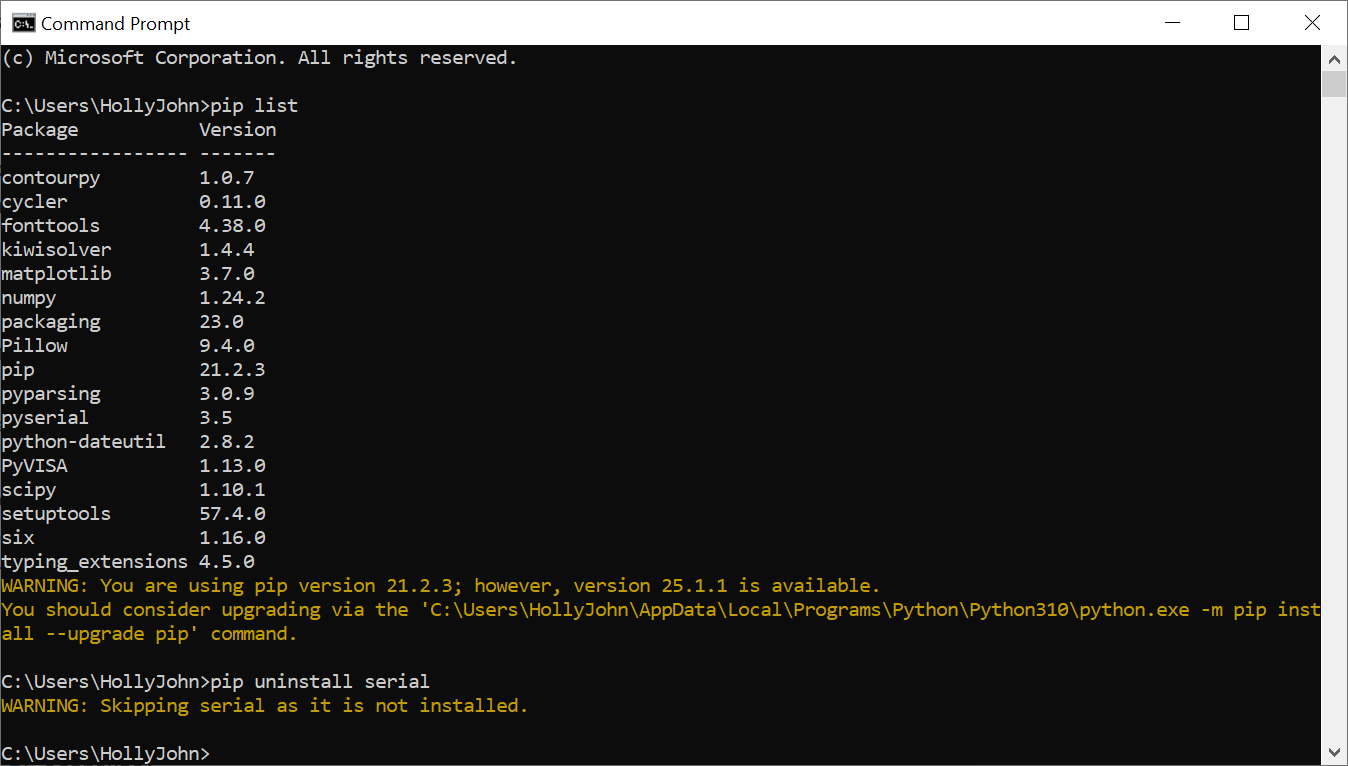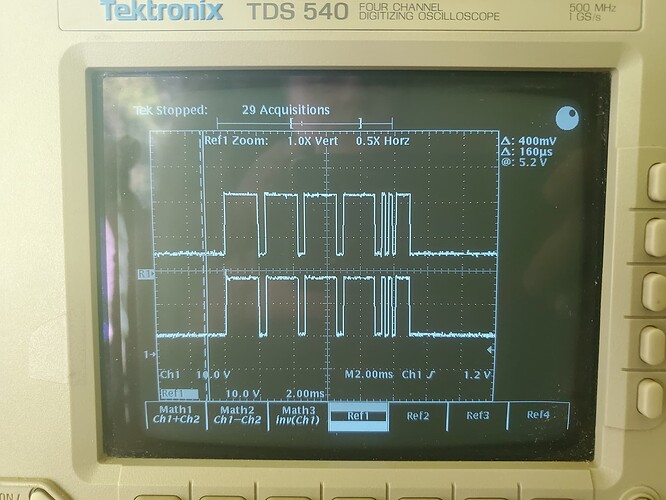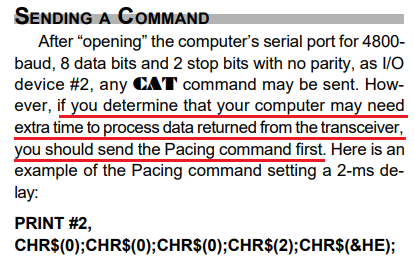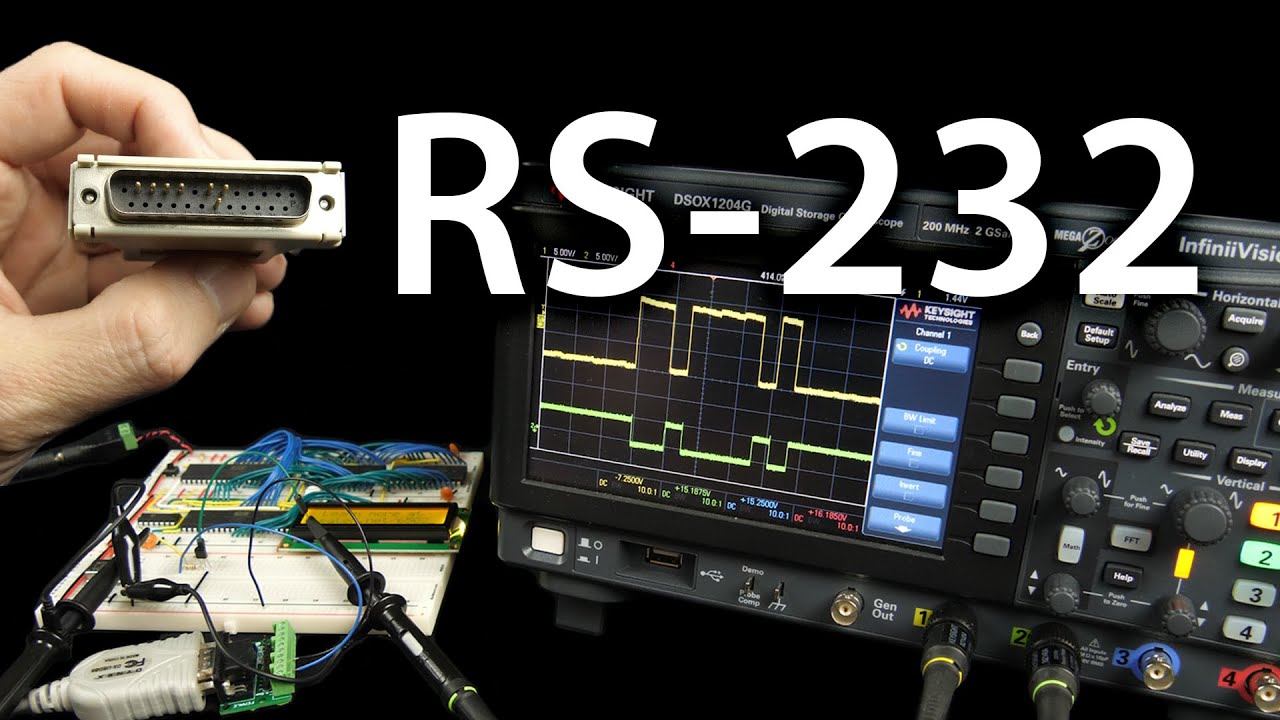From what I found, the FT-1000 doesn’t have any kind of flow control, but the FT-2000 does.
So, as a final attempt, here’s a simple GUI that lets you test with or without flow control:
# A simple GUI for testing talking to a FT-1000MP_Mark-V radio via the CAT/serial port.
#
from serial import Serial, SerialException
from tkinter.messagebox import showerror
import tkinter as tk
# The port to use.
DEFAULT_PORT = "COM5"
class App(tk.Tk):
def __init__(self):
super().__init__()
self.title("Radio GUI")
# Add a frame for the buttons.
button_frame = tk.Frame(self)
button_frame.pack(side=tk.TOP, fill=tk.X)
# Add a "Port" entry.
tk.Label(button_frame, text="Port:").pack(side=tk.LEFT)
self.port_var = tk.StringVar(value=DEFAULT_PORT)
self.port_entry = tk.Entry(button_frame, width=10, textvariable=self.port_var)
self.port_entry.pack(side=tk.LEFT)
# Add the flow control checkbox.
tk.Label(button_frame, text="Flow control:").pack(side=tk.LEFT)
self.flow_control_var = tk.BooleanVar(value=False)
self.flow_control_checkbox = tk.Checkbutton(button_frame, variable=self.flow_control_var, onvalue=True, offvalue=False)
self.flow_control_checkbox.pack(side=tk.LEFT)
# Add the "Connect" button.
self.connect_button = tk.Button(button_frame, text="Connect", padx=5, pady=5, command=self.on_connect)
self.connect_button.pack(side=tk.LEFT)
# Add the "Clear log" button.
self.clear_log_button = tk.Button(button_frame, text="Clear log", padx=5, pady=5, command=self.on_clear_log)
self.clear_log_button.pack(side=tk.LEFT)
# Add the "A -> B" button.
self.copy_vfo_a_button = tk.Button(button_frame, text="A -> B", padx=5, pady=5, command=lambda: self.send("A -> B", bytes.fromhex("00 00 00 00 85")))
self.copy_vfo_a_button.pack(side=tk.LEFT)
# Add the "Read status flags" button.
self.read_status_flags_button = tk.Button(button_frame, text="Read status flags", padx=5, pady=5, command=lambda: self.send("Read status flags", bytes.fromhex("00 00 00 00 FA")))
self.read_status_flags_button.pack(side=tk.LEFT)
# Add a frame to display the log.
response_frame = tk.Frame(self)
response_frame.pack(side=tk.TOP, fill=tk.BOTH, expand=True)
# Add a title label for the log frame.
tk.Label(response_frame, text="Log").pack(side=tk.TOP)
# Add a listbox with a scrollbar to display the log.
self.log_listbox = tk.Listbox(response_frame)
self.log_listbox.pack(side=tk.LEFT, fill=tk.BOTH, expand=True)
scrollbar = tk.Scrollbar(response_frame, orient=tk.VERTICAL, command=self.log_listbox.yview)
scrollbar.pack(side=tk.RIGHT, fill=tk.Y)
self.log_listbox.configure(yscrollcommand=scrollbar.set)
# The serial port and response buffer.
self.serial_port = None
self.response_buffer = b""
# Disable the buttons initially.
self.enable_buttons(False)
self.send_buffer = b""
# Periodically check for a response.
self.on_tick()
def on_tick(self):
if self.serial_port is not None:
if self.send_buffer:
self.serial_port.send(self.send_buffer)
self.send_buffer = b""
# Read any (additional) response from the serial port. We want to append to the current response, if any.
if self.response_buffer:
self.log_listbox.delete(tk.END)
self.response_buffer += self.serial_port.read(self.serial_port.in_waiting)
if self.response_buffer:
self.log_listbox.insert(tk.END, self.response_buffer.hex(" ").upper())
# Schedule the next check or send.
self.after(200, self.on_tick)
def on_connect(self):
if self.serial_port is None:
# Try to connect to the serial port.
try:
self.serial_port = Serial(port=self.port_var.get(), baudrate=4800, parity="N", stopbits=2, bytesize=8, rtscts=self.flow_control_var.get())
except SerialException as ex:
showerror(self.title(), str(ex))
else:
# We connected successfully, so enable the buttons.
self.enable_buttons(True)
self.connect_button["text"] = "Disconnect"
else:
# Disconnect from the serial port and disable the buttons.
self.serial_port.close()
self.serial_port = None
self.connect_button["text"] = "Connect"
self.enable_buttons(False)
def on_clear_log(self):
self.log_listbox.delete(0, tk.END)
self.response_buffer = b""
def send(self, description, data):
if self.serial_port is None:
return
# We're going to send a command, so log the action and clear the response buffer.
self.log_listbox.insert(tk.END, f"[{description}]")
self.response_buffer = b""
try:
self.serial_port.write(data)
self.serial_port.flush()
except SerialException as ex:
showerror(self.title(), str(ex))
self.serial_port.close()
self.serial_port = None
self.connect_button["text"] = "Connect"
self.enable_buttons(False)
def enable_buttons(self, enable):
# These must be disabled when connected.
new_state = tk.DISABLED if enable else tk.NORMAL
self.port_entry["state"] = new_state
self.flow_control_checkbox["state"] = new_state
# These must be enabled when connected.
new_state = tk.NORMAL if enable else tk.DISABLED
self.copy_vfo_a_button["state"] = new_state
self.read_status_flags_button["state"] = new_state
App().mainloop()




